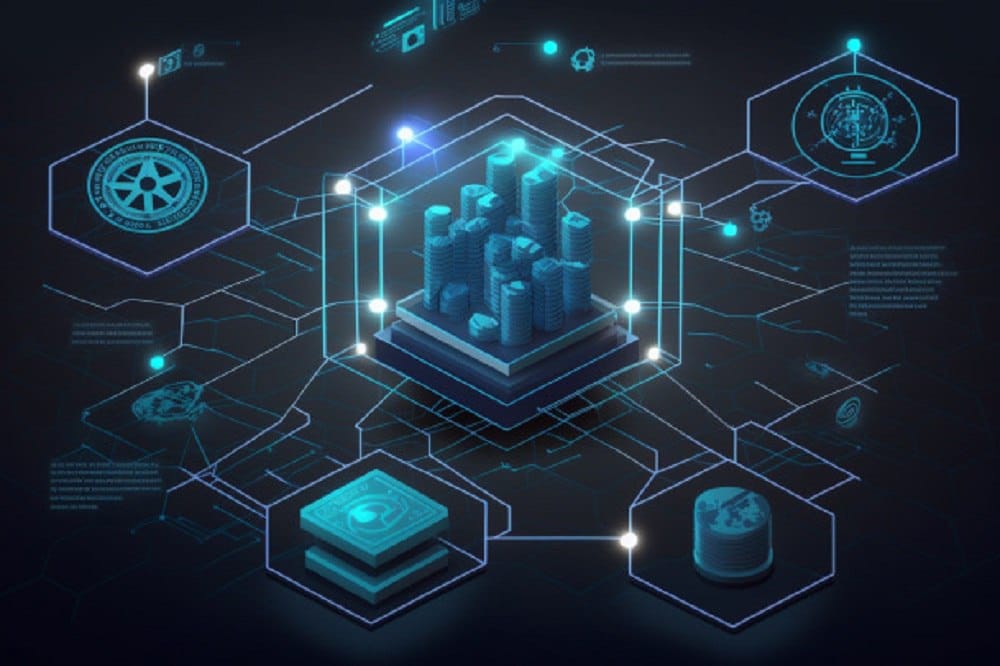Understanding Decentralized Derivatives
Decentralized derivatives are financial contracts traded on decentralized platforms utilizing blockchain technology. Their value is based on an underlying asset, a cryptocurrency, commodity, or derivative.
Fundamental Concepts
1. Underlying Asset
Every derivative contract is based on an underlying asset, a cryptocurrency, a commodity, or a derivative.
2. Derivative Contract
These contracts have a value determined by an underlying asset. They exist in various forms, such as futures, options, and swaps, allowing traders to speculate on the asset’s price movement without holding it.
3. Decentralized Platforms
Platforms built on blockchain technology facilitate the trading of decentralized derivatives. They use smart contracts for their operations, with Ethereum being a commonly used platform due to its support for smart contracts.
4. Smart Contracts
Smart contracts handle decentralized derivatives trading, settlement, and clearing processes. They automatically execute tasks when specific conditions are met.
5. Direct Trading
Participants can trade directly with each other, which reduces the need for intermediaries.
6. Liquidity Pools
Users who lock their assets in smart contracts form liquidity pools, which aid in trading on decentralized finance platforms.
7. Automated Market Makers (AMMs)
On decentralized exchanges, AMMs determine asset prices based on the available liquidity in the pool.
8. Decentralized Oracle Networks
These networks provide external data to smart contracts, ensuring accurate contract settlements by offering real-time price information on the underlying asset.
Varieties of Decentralized Derivatives
Within the DeFi landscape, several decentralized derivatives resemble conventional financial tools.
Decentralized option agreements allow users to predict an underlying asset’s price direction over a predetermined period. Meanwhile, decentralized futures agreements let individuals agree in advance to buy or sell an asset at a specific price on a future date, assisting in risk management and protective measures.
Decentralized synthetic assets offer users exposure to a range of assets without needing direct possession. Furthermore, decentralized swaps and their option counterparts allow users to exchange assets based on predefined terms, enhancing market liquidity and offering diverse trading strategies.
How do decentralized finance platforms utilize derivatives?
In decentralized finance (DeFi), derivatives operate like their traditional counterparts but leverage blockchain-based smart contracts, often on platforms like Ethereum, for execution. These financial agreements, termed derivatives, derive their worth from base assets, benchmarks, or reference indicators. Instead of holding the assets, these instruments allow users to make informed guesses on potential price shifts.
Consider two individuals, Alice and Bob. Alice speculates that the price of Ethereum will rise in the next month, while Bob believes the opposite. They enter a derivative contract on a decentralized options platform. A smart contract with set parameters, including the strike price and option type, is established. Depending on Ethereum’s price movement, Alice or Bob will benefit from the contract’s outcome.
Challenges with Decentralized Derivatives
Decentralized derivatives face several challenges:
Technology Maturity: The ecosystem is still developing, leading to potential errors and vulnerabilities.
Scalability Concerns: Platforms might experience congestion and high transaction costs, affecting contract execution efficiency.
Complexity: The intricate nature of financial derivatives can be daunting for some users.
Lack of Standard Procedures: Clear procedures and legal frameworks can help broader adoption.
Navigating the Future of Decentralized Finance
The horizon for DeFi derivatives is promising, driven by advancements and a growing appetite for decentralized financial tools. Enhanced smart contract functions, improved security measures, and seamless blockchain integration are set to elevate the efficiency and reach of DeFi derivatives. As regulatory frameworks become more apparent, more institutions might venture into this domain, lending it further credibility.
Integrating tangible assets and advanced risk management strategies may pave the way for more intricate derivatives. For DeFi derivatives to truly reshape the global financial landscape, challenges like scalability, user awareness, and regulatory alignment must be addressed.
At Tokenhell, we help over 5,000 crypto companies amplify their content reach—and you can join them! For inquiries, reach out to us at info@tokenhell.com. Please remember, cryptocurrencies are highly volatile assets. Always conduct thorough research before making any investment decisions. Some content on this website, including posts under Crypto Cable, Sponsored Articles, and Press Releases, is provided by guest contributors or paid sponsors. The views expressed in these posts do not necessarily represent the opinions of Tokenhell. We are not responsible for the accuracy, quality, or reliability of any third-party content, advertisements, products, or banners featured on this site. For more details, please review our full terms and conditions / disclaimer.
